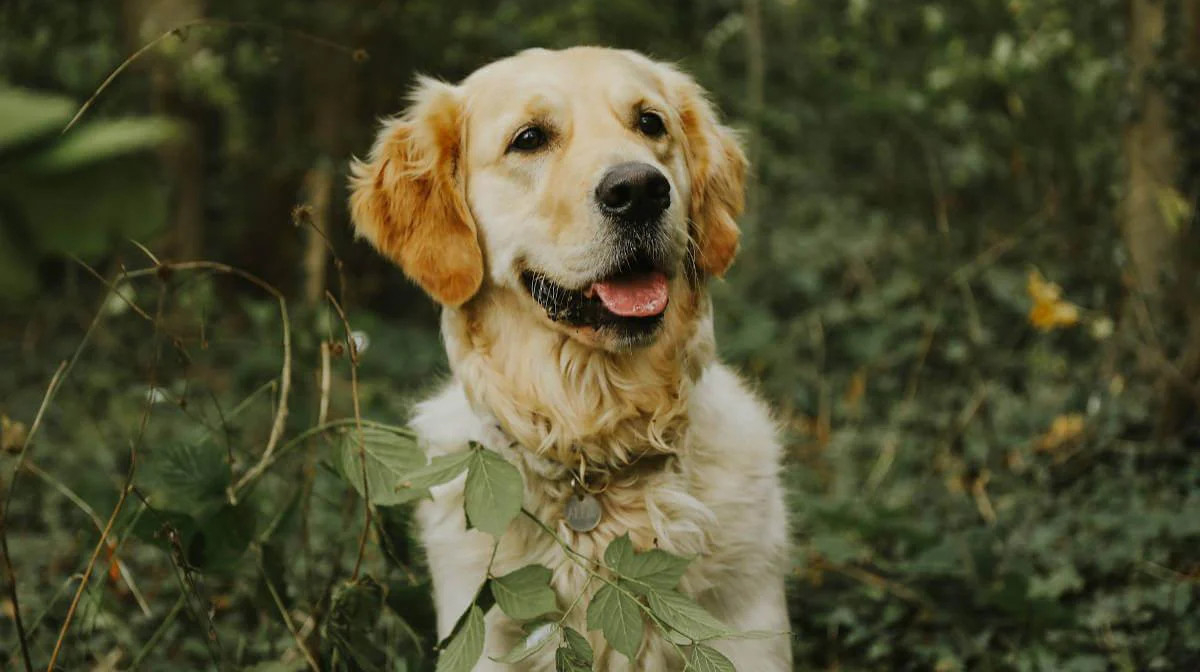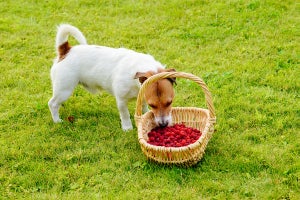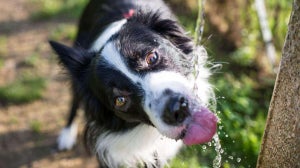
Christmas is almost upon us and many of you may have already dusted off the storage boxes and begun adorning your home with decorations. For some dogs, Christmas can be a stressful experience because of new people coming around the house, loud parties, and changes in routine. For others, it is an enjoyable season when the whole family comes together — just be sure to avoid the temptation to feed your dog Christmas dinner, which is too rich and salty for their diet. Instead, stick with their normal dog food (dry or wet) and reward them in other ways, like with new toys and a festive walk. Yet, with so much colourful tinsel, neatly wrapped presents, and Christmas lights all over the home, what colours, if any, can dogs see? Most of us have heard the rumour that dogs see the world in black and white. In fact, their vision is closer to our own than you might realise, so Christmas is a colourful time of year for our canine pets, too.
Are dogs colour blind?
Contrary to the popular myth, dogs are not colour blind—or rather, not entirely. Studies have confirmed that dogs are able to distinguish between illuminated panels of different colours in tasks where they win a reward if they interact with the correct colour. Dogs also possess the same type of receptors in the backs of their eyes that we do—called “cones”—meaning they can see colour, too. However, while we have three types of cones, dogs have only two types. So, while dogs are not entirely blind to all colours, they are blind to some.
What colours can dogs see?
Because dogs only have two types of colour-detecting cones in their eyes, the range of colours dogs can see is much more limited compared to humans. Specifically, while the human spectrum of colour ranges from red to green, to violet, dogs can only see from goldish-yellow to dark blue, with the colours in between being greyish, lighter versions of these. This is why some dogs are so good at catching brightly coloured tennis balls, and why many dog trainers wear blue clothing at dog agility shows. These are the colours that dogs can most easily distinguish.
How do dogs see other colours?
Because dogs lack the same cones we do, they cannot see red and green, nor the colours in between. Greens, yellows, and orange all appear different shades of yellow to dogs, while red can be anything from black to dark grey/brown. Teal and turquoise shades of green-blue also appear grey to dogs, and violet/purple appears as dark blue.
How humans see colours

How dogs see colours

So, when you throw your dog’s red toy out on to the green grass, he or she is looking for a dark grey object against an only slightly lighter grey background. This is why owners often see their dogs sniffing along the ground for a toy that is only a few feet away from them.
Can dogs see in the dark?
Where dogs see less colour than us humans in bright light, they are much more capable of seeing in low-light settings. While dogs only have two types of cone cell in their eye, they have more light-receptive cells, known as rods. Furthermore, dogs have larger pupils, meaning more light can get into their eye. However, while dogs’ vision is approximately five times better than humans in low light, they still need some light to be able to see. Dogs cannot see in the complete dark, although they are much better at navigating darkness compared to us because of their other heightened senses, including smell and hearing. So, as you decorate your home for Christmas this year, remember that those prominent greens and reds are little more than a dark, brownish grey to your pet. This is not going to harm or upset your dog in anyway, but if you’d like your dog to have a better chance of distinguishing the seasonal decorations, opt for blues, yellows, and whites instead.

Related Articles








